Sedans might not be the go-to car design for most buyers anymore, but we’re still blessed with some cheap and fun new four-doors. There’s the Honda Civic Si, the Hyundai Elantra Sport and the Volkswagen Jetta GLI, to name a few. And the Jetta kind of gave birth to the whole compact sport sedan segment, now didn’t it?
Think about it. Back in the 1990s, if you wanted four doors, performance and a bit of refinement, you had to dish out large sums of money for a BMW or an Audi. Meanwhile, Volkswagen had it all figured out with its hot Jetta—one of which packed six cylinders of narrow-angle fury.
I took an old GLX VR6 for a drive in the countryside, and it made me realize that Volkswagen actually paved the way for many of the sport sedans we take for granted today.
(Full Disclosure: The opportunity to drive a 1998 Jetta GLX came from a work colleague and Canadian Jalopnik reader who owns one. He looked at me one day at the office and asked me if I wanted to review his car. So I did.)
What Is It?
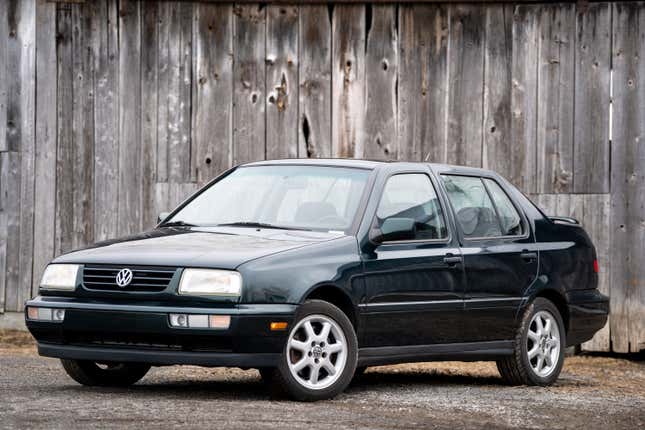
Not many people know this, but there has been a fast Jetta for almost as long as a Golf GTI. These things appeared some time in 1984 under the GLI name, along with the second-generation of what’s now known as the Jetta. And just like the current car, it was essentially a four-door GTI.
Remember, back then, the Golf was only offered as a three-door hatchback, so a sedan version made a lot of sense. Its 1.8-liter engine only made a measly 90 horsepower but the GLI was light, agile and a shit-ton of fun to drive.
In 1993, North America was introduced to the third-gen Jetta known—believe it or not—as the MKIII. That model is generally credited with making the Jetta a household name in this half of the world.
The Classic Green aspiring gentleman’s sedan you see here is kind of an oddball in the GLI’s timeline. Not only did it wear an “X” instead of an “I” in its nomenclature, it was the first quick Jetta to be powered by the VR6 engine, the same engine that powered the Corrado performance hatchback.
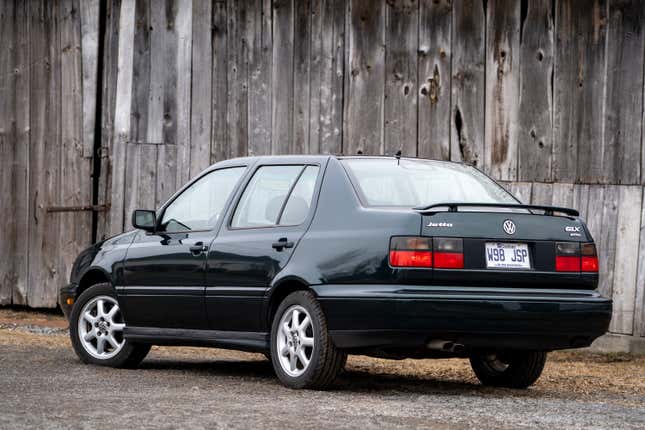
The GLX basically kept the standard Jetta’s McPherson strut suspension, but with stiffer springs and larger sway bars. Its rear brakes were discs instead of drums, and except for a tiny decklid spoiler, 16-inch wheels, a front lip and “GLX VR6” badging, there wasn’t much about the GLX that set it apart from a normal ho-hum Jetta.
I guess that’s all you needed in the ’90s to be considered “hot.”
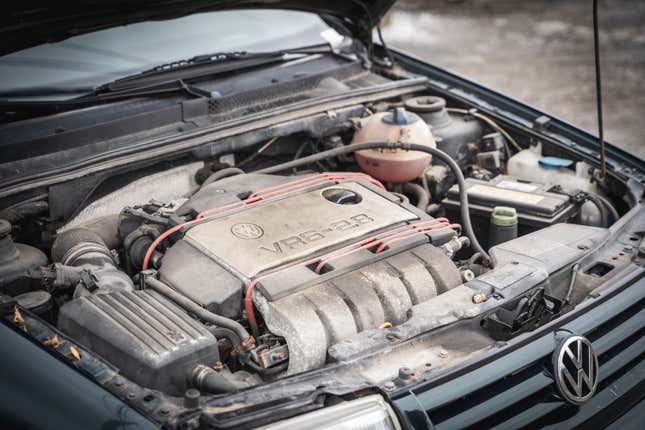
That 2.8-liter narrow-angle V6 would send a claimed 172 horsepower and 173 lb-ft of torque straight to the front wheels. While an automatic gearbox was available, the one to get was the close-ratio five-speed manual.
Honestly, besides some artfully laid-out spark plug wires that could count as engine bay decoration, that was about all there was to this performance version of the MKIII Jetta. The 0-60 time stood at roughly seven seconds. Not bad.
Why Does it Matter?
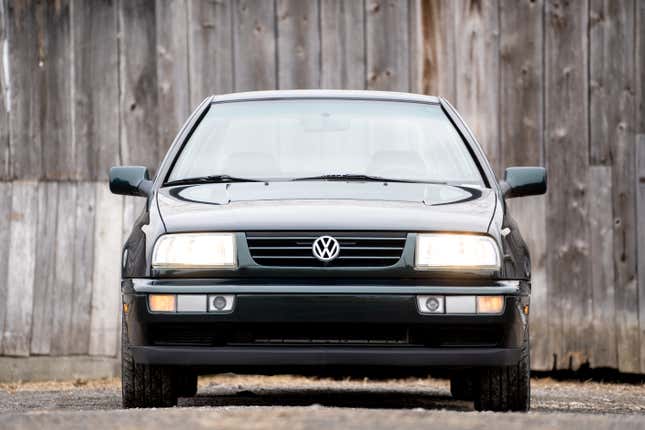
The Jetta GLI/GLX has always been a returning member of the sport compact car club, and in the late ’90s, when pocket rockets were enjoying a lot of popularity, these things quickly became a go-to car for tuners and street racers wanting to spank Hondas and Mustangs.
This is arguably the most intriguing of the sporty Jettas, largely due to its engine. Because it was quite revolutionary at the time, Volkswagen stuffed these things into everything it could, from sports coupes to cargo vans.

Its super-narrow configuration meant it could fit inside the engine bay of a normally four-cylinder model. It also only had one cylinder head, which made spark plug and head gasket maintenance a lot simpler than a conventional V6.
But the VR6’s signature feature was always its exhaust note. Tuners would bolt aftermarket mufflers on their Golfs, Jettas, Corrados and even Passats to make them sound like an expensive Audi or Porsche.
Furthermore, the simplicity of this GLX defines the whole ethos of the sport sedan itself. These cars were designed to be fast, but also subtle and unassuming, and boy did they nail it back then. Next to this, today’s cars look like Christmas trees with their fancy LED’s and fake air vents.
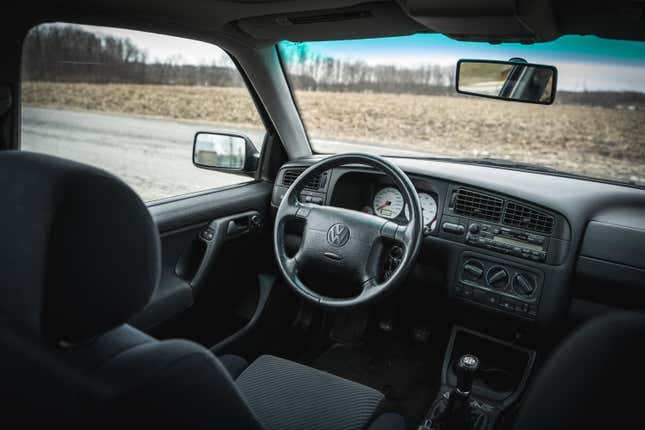
1998 was the last model-year of the third generation Jetta here in North-America. While US-spec cars came with leather seats, Canadian GLX’s could be had with cloth, which is what this car has, giving it extra points for nineties nostalgia. Check out that zebra-like texture on that driver’s seat up there!
The owner, Germain (which ironically sounds like “German”) isn’t quite sure why his car doesn’t have the iconic VR6 badging on the grille. Perhaps it was a delete option back in 1998? You guys can confirm that one for me in the comments.
Sitting In A Box
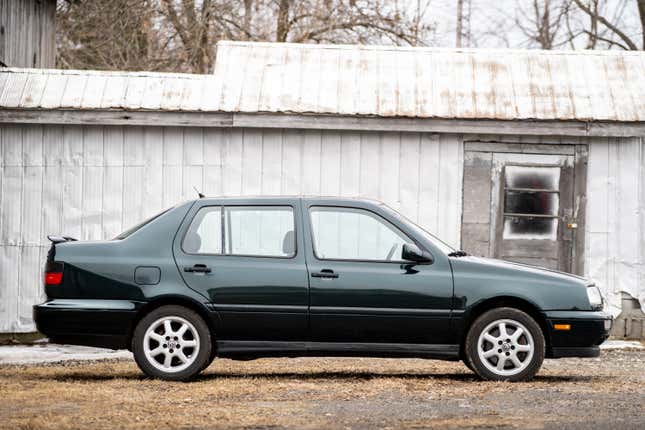
It’s crazy to think that 1998 is already considered “old.” I feel like these model Jettas were brand new yesterday, but seeing this one threw a bunch of late ’90s nostalgia in my face, reminding me how much has happened since.
Something this square and angular would never fly by today’s safety standards. Even the rearview mirror is a straight-edged rectangle. It is the textbook definition of a three-box design, almost as though VW’s own designers didn’t even bother with designing it- “Let’s just make a sedan, guys”.
It’s a stark contrast to today’s car designing realities where five of the world’s best stylists are called in to draw a Camry.
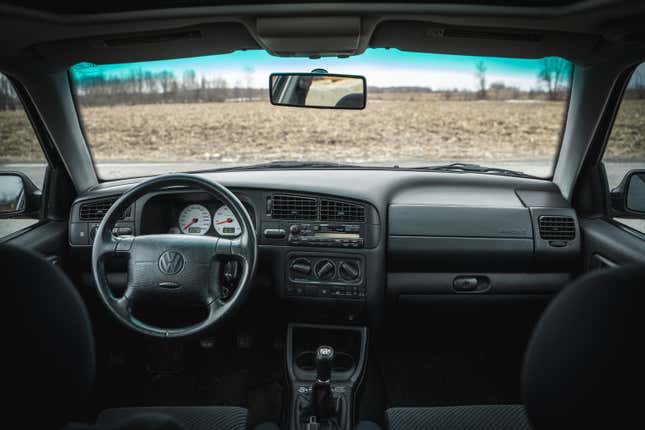
Sitting inside the GLX feels equally throwback. Even back in 1998, Volkswagens had a reputation for having functional, no-frills interiors. But boy does this Jetta remind you how spoiled we’ve become with our fancy chrome inserts, ambient lighting and connectivity features. Not to mention seats and steering wheels that adjust in all possible configurations.
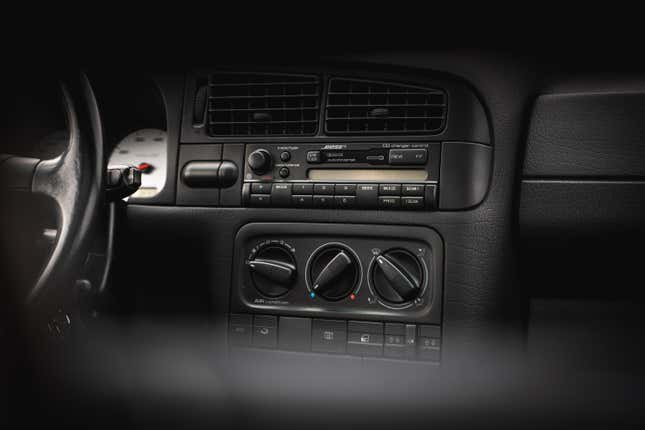
Yeah, there’s none of that here. Just a black wall of a dashboard with big physical dials and a skinny steering wheel that doesn’t telescope.
I floored the clutch pedal, held the brake, and fired up the VR6. It was smooth and refined, exactly what you’d expect from a European car, discreetly rumbling underneath me. It was at that moment that I wished I had a Big Shiny Tunes CD to throw into that period-correct Bose sound system.
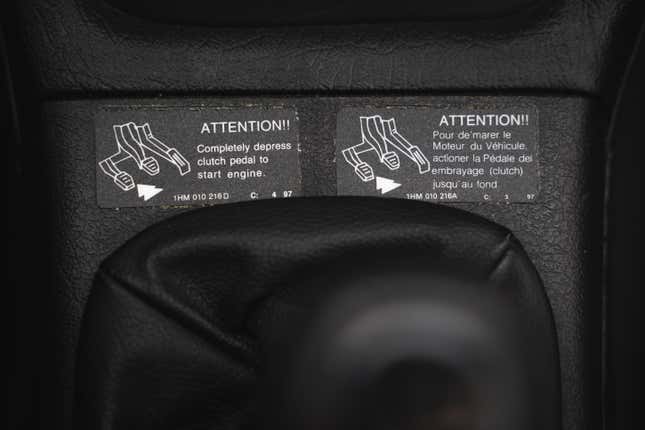
As I grabbed the sloppy shifter, I noticed a sticker next to it explaining how to drive stick, complete with what is possibly the worst French translation on Earth.
I’m surprised I didn’t find instructions on how to start the car after the Y2K bug.
I checked my blind spots using my neck. No fancy blind spot monitoring here. The road was clear. I depressed the friction-less clutch pedal, and off I went, sitting upright in my little green bread box, attracting absolutely no attention to myself.
Disappointments
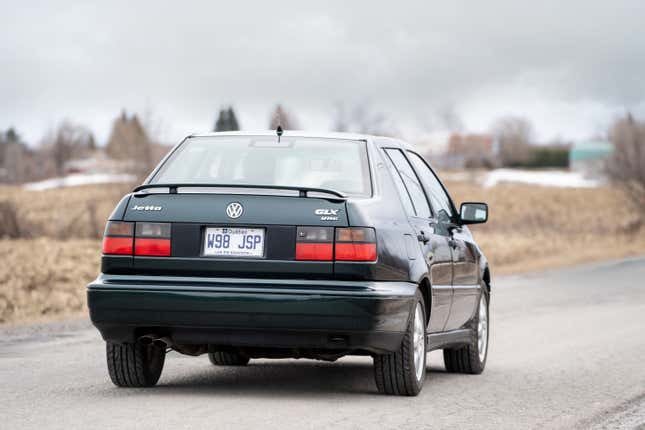
Most of my disappointments came from the fact that this is an old car, and that we’ve become used to the creature comforts of modern automobiles. We’ve made a lot of progress in terms of ergonomics and cabin space. New cars are also enormous, so getting back into an actual compact from 20 years ago felt cramped.
I mentioned the clutch earlier. It’s the biggest letdown. I was expecting something with a little more bite, but this one feels like your foot is going through a bucket of liquid fat. Perhaps Volkswagen wanted to market this as a luxury car? That would make sense considering the $28,000 (CAD) price tag at the time. That’s 41 grand in today’s money, for a damn Jetta!
But apart from that, seriously, this car didn’t disappoint me much.
Casual Driving
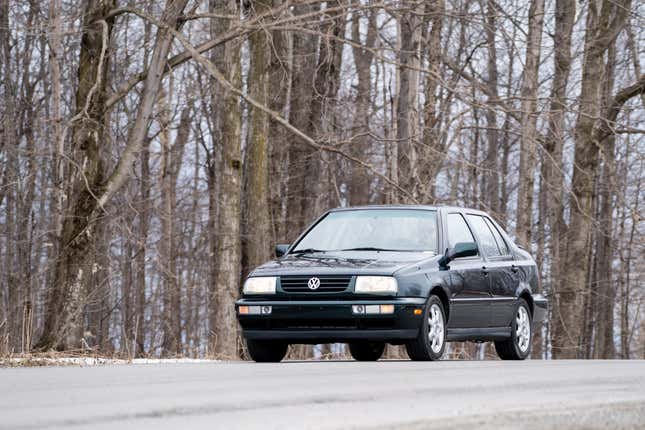
If anything, I was pleasantly surprised at how modern this Jetta felt. There’s an overall sensation of solidity, from how the doors thump shut, or how the entire car’s structure reacts to potholes and thawing spring roads.
While I felt enormous in the car, front seat pulled back to destroy whatever rear passenger would have sat there, it was a comfortable ride. If not for the 19 mpg fuel consumption average, this would be a fantastic daily driver.
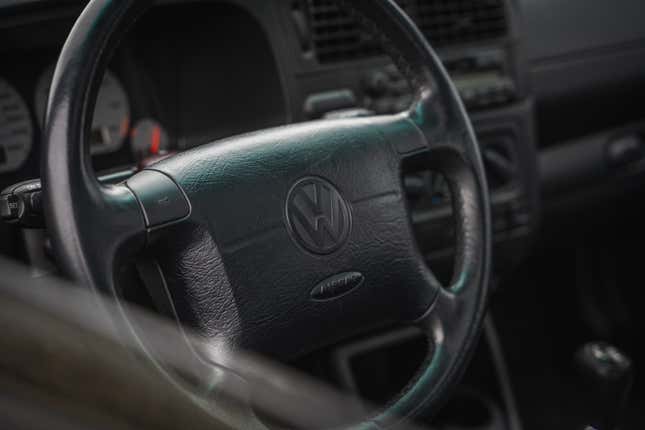
Plus, the VR6 isn’t just melodious, it has plenty of low-end grunt, so no need to downshift to obtain forward thrust. The entire car’s chassis was still impeccably well held together too, no unwanted rattles or cabin noises you’d expect from a twenty year-old car, which says a lot about the build quality of Volkswagens at the time.
Hard Driving
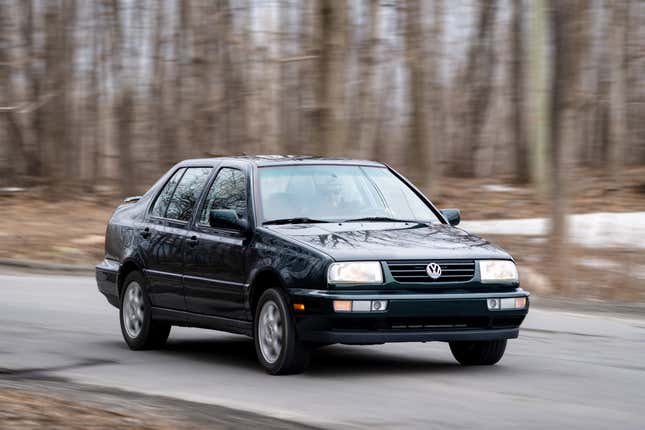
Obviously, this is why the GLX was conceived, and even 20 years later, it doesn’t disappoint. At least, its engine doesn’t.
I was impressed at how quick this thing felt after all the modern turbocharged machines I drive. Prior to driving this, I had just gotten out of a 2019 BMW 330i; a quick sedan, yet the old Volks didn’t let me down.
The VR6 isn’t just filled with low end twist, it loves to rev and has fantastic throttle response, all while remaining smooth and rumbly until it hits redline. God I love that exhaust note, though. Makes you notice what we’ve lost through turbocharging.
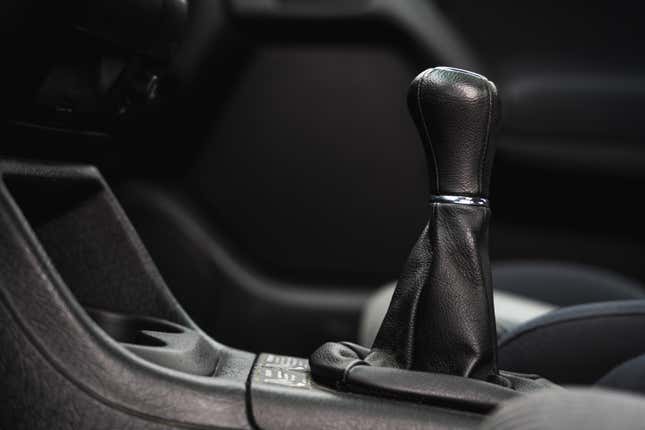
Sure, the shift knob is a little wobbly by today’s standards, but gears click into each other in a satisfying, almost addictive matter. If it wasn’t for the rubber clutch I mentioned earlier, this setup would be just as, if not better than the current GLI’s manual gearbox.
Brakes are good, quite good actually, but you can tell this car’s original shocks are getting old, as my tester exhibited a fair bit of body roll in the bends. It didn’t prevent me from having massive fun with it, however. The GLX remains a tossable and lightweight machine. I ended up throwing it hard into each corner, gigantic grin strapped from each ear, reminiscing my boy racer days.
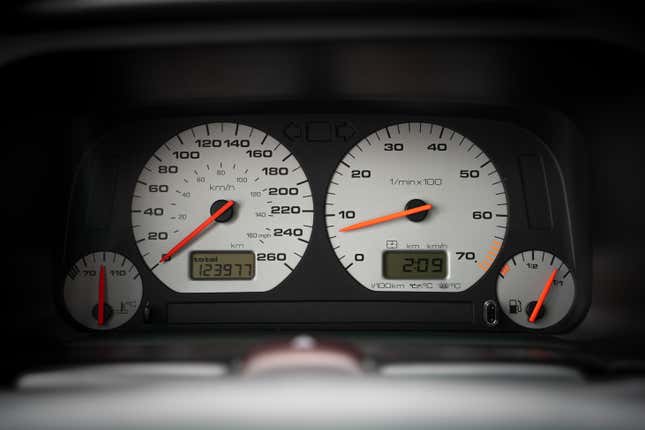
What I love the most about this old Jetta, is how it delivers its performance under absolute secrecy, adding extra points to its appeal. Nobody will know you’re flying down the countryside with it. But you will as you’ll be ripping through the gears of your unassuming German sport sedan, narrow-angle, naturally aspirated V6 belching its way organically to the rev limiter.
Value
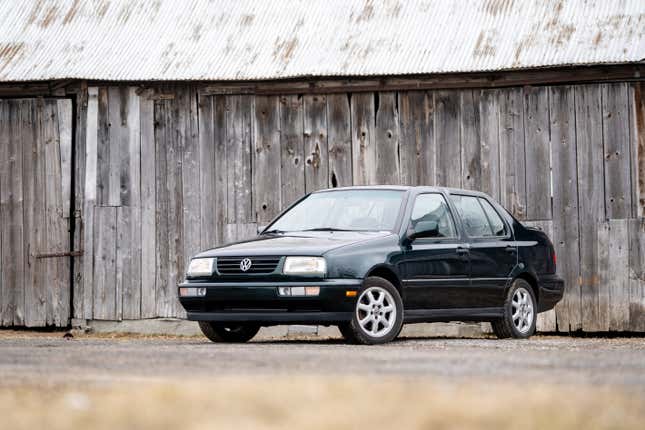
The great thing about these cars is that the market hasn’t yet hit them the same way it did some mid-nineties Japanese or German sports cars, so they’re still rather affordable.
Our man Germain prefers not disclosing how much he paid for his, but he claims he’s purchased it three years ago with only 118,000 km (73,000 miles) on the odometer. My guess is he didn’t pay much more than 6,000 bucks for it, which is what the rare ads I’ve found for these things suggest.
Considering their rarity and significance in the automotive landscape, a well kept GLX like this one will undoubtedly appreciate in value. Also, VR6 parts are plenty, so it shouldn’t be too difficult to repair your old V-dub when need be.
Verdict
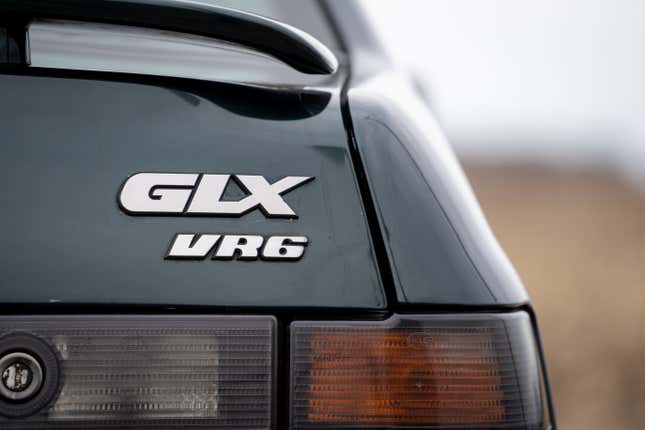
Driving this thing confirmed my theory: Volkswagen saw a trend coming when it gave extra doors and a trunk to its Golf GTI. It’s too bad people didn’t buy more of these new, because now, good luck finding a clean, unmolested one.
Perhaps it has something to do with my age, or simply because I’m plagued with memories of the 1990s. But one thing I can confirm with certainty is that while I was driving this GLX VR6, I wasn’t thinking about my phone. All I could do was drive, because there was absolutely nothing at my disposal - no fancy LCD screen, Android Auto, or semi-autonomous technology - to filter out the raw experience of driving the car.
It’s a freedom modern technology is slowly stealing from us at our expense.
William Clavey is an automotive journalist in Montreal, Canada and contributes to Jalopnik. He runs claveyscorner.com.
